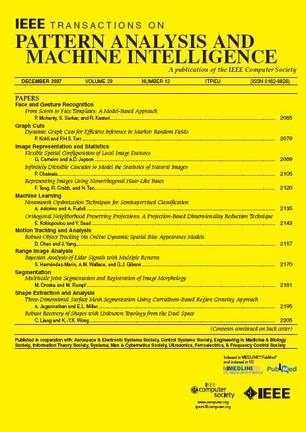Efficient 3D Surface Super-resolution via Normal-based Multimodal Restoration.
IF 18.6
1区 计算机科学
Q1 COMPUTER SCIENCE, ARTIFICIAL INTELLIGENCE
IEEE Transactions on Pattern Analysis and Machine Intelligence
Pub Date : 2025-10-02
DOI:10.1109/tpami.2025.3614184
引用次数: 0
Abstract
High-fidelity 3D surface is essential for vision tasks across various domains such as medical imaging, cultural heritage preservation, quality inspection, virtual reality, and autonomous navigation. However, the intricate nature of 3D data representations poses significant challenges in restoring diverse 3D surfaces while capturing fine-grained geometric details at a low cost. This paper introduces an efficient multimodal normal-based 3D surface super-resolution (mn3DSSR) framework, designed to address the challenges of microgeometry enhancement and computational overhead. Specifically, we have constructed one of the largest normalbased multimodal dataset, ensuring superior data quality and diversity through meticulous subjective selection. Furthermore, we explore a new two-branch multimodal alignment approach along with a multimodal split fusion module to mitigate computational complexity while improving restoration performances. To address the limitations associated with normal-based multimodal learning, we develop novel normal-induced loss functions that facilitate geometric consistency and improve feature alignment. Extensive experiments conducted on seven benchmark datasets across four different 3D data representations demonstrate that mn3DSSR consistently outperforms state-ofthe-art super-resolution methods in terms of restoration accuracy with high computational efficiency.通过基于法线的多模态恢复,高效的3D表面超分辨率。
高保真3D表面对于医学成像、文化遗产保护、质量检查、虚拟现实和自主导航等各个领域的视觉任务至关重要。然而,3D数据表示的复杂性在以低成本捕获细粒度几何细节的同时,对恢复不同的3D表面提出了重大挑战。本文介绍了一种高效的基于多模态法线的三维表面超分辨率(mn3DSSR)框架,旨在解决微观几何增强和计算开销的挑战。具体来说,我们构建了最大的基于正态的多模态数据集之一,通过细致的主观选择确保了卓越的数据质量和多样性。此外,我们探索了一种新的双分支多模态对齐方法以及多模态分裂融合模块,以降低计算复杂度,同时提高恢复性能。为了解决与基于正态的多模态学习相关的局限性,我们开发了新的正态诱导损失函数,以促进几何一致性和改进特征对齐。在4种不同3D数据表示的7个基准数据集上进行的大量实验表明,mn3DSSR在恢复精度和计算效率方面始终优于最先进的超分辨率方法。
本文章由计算机程序翻译,如有差异,请以英文原文为准。
求助全文
约1分钟内获得全文
求助全文
来源期刊
CiteScore
28.40
自引率
3.00%
发文量
885
审稿时长
8.5 months
期刊介绍:
The IEEE Transactions on Pattern Analysis and Machine Intelligence publishes articles on all traditional areas of computer vision and image understanding, all traditional areas of pattern analysis and recognition, and selected areas of machine intelligence, with a particular emphasis on machine learning for pattern analysis. Areas such as techniques for visual search, document and handwriting analysis, medical image analysis, video and image sequence analysis, content-based retrieval of image and video, face and gesture recognition and relevant specialized hardware and/or software architectures are also covered.

 求助内容:
求助内容: 应助结果提醒方式:
应助结果提醒方式:


